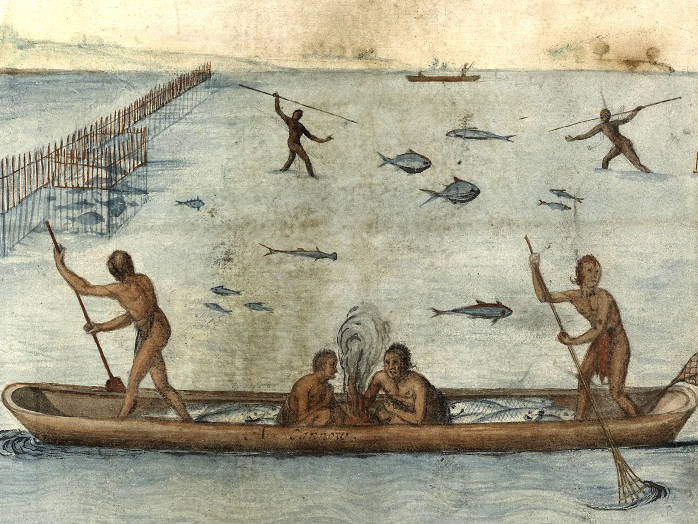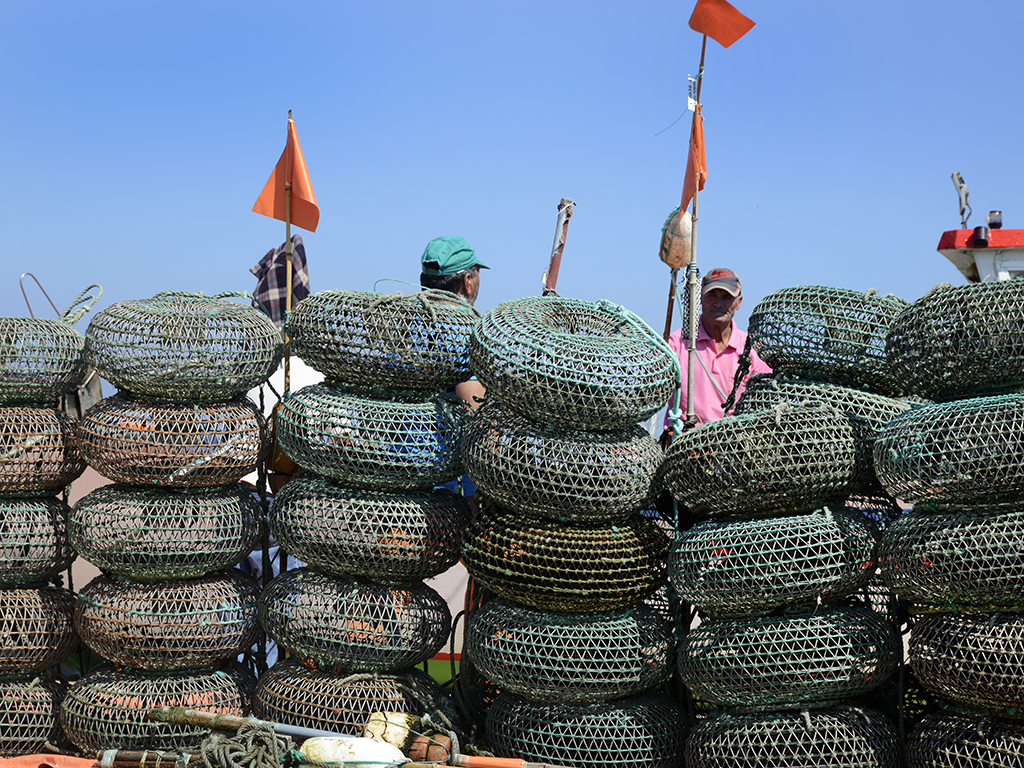Fishing Architecture on the 72th SAH, Providence

Fishing has a strong environmental impact. The session organized by André Tavares, researcher at Lab2PT at School of Architecture of the University of Minho bring together examples of fishing and built practice to develop an historical understanding of how the marine environment, its resources and its architecture relate to each other. Fishermen conceive hunting devices, build houses and harbours, adapt boats and develop infrastructure for the processing of fish into commercial goods. What architecture does fishing produce? What are its landscapes and seascapes? How does it shape onshore, inshore and offshore maritime geographies?
Political and economic histories recognize relationships between ecology, food and human societies. What about architecture? Investigating different types of saltwater fisheries and how they link human and non-human systems can help to assess the specific architecture and infrastructure each one generates in relation to sea life, from noble whaling to adventurous cod fishing, from spectacular tuna catches to humble sardine hauls, and thereby to relate the human footprint to its biological impact. The session was organized with selected papers following three threads:
a) Fishing and processing techniques: methods of processing and preserving fish depend on climate and available resources. Hence, various fishing techniques generate different maritime movements and geographies, and also relate to distinct naval and urban traditions.
b) Urban settlements: the relationship between fish and humans is grounded in economic dynamics that both propel the fishing activities and result from them. Harbours are moved and transformed to accommodate new and bigger ships, processing plants adapted in response to consumption habits, and onshore jobs vary in accordance with fishing seasons and climate change. The history of fisheries can make visible this tangle of architecture, technology, environment and marine ecosystems.
c) Technological transfers: studying exchanges that occur as fishermen travel are key to opening up the geographical borders of historical narratives. A maritime approach to architecture can thus overcome national and continental boundaries by following a biological resource.
Program
Post-Moratorium Newfoundland and the Emergence of a Landscape of the New Fishery
George Kapelos, Ryerson University, Canada
Reclamation and Fishing Village, Pearl River Estuary
Mengxiao Tian, University of Hong Kong
Planning a Blue Revolution: Protein, Process, and Metabolism in Eames’s National Fisheries Center and Aquarium, 1962-1972
Carson Chan, Princeton University, USA
Photographic Portrayals of the Delaware Bay’s Fishing Architecture
Michael Chiarappa, Quinnipiac University, USA
Ecotopian Mariculture: The NAI’s Maine Coastal Village
Meredith Gaglio, Columbia University, USA
Click here to acess the full program of the 72th SAH annual international conference.



